Nov. 22, 2023
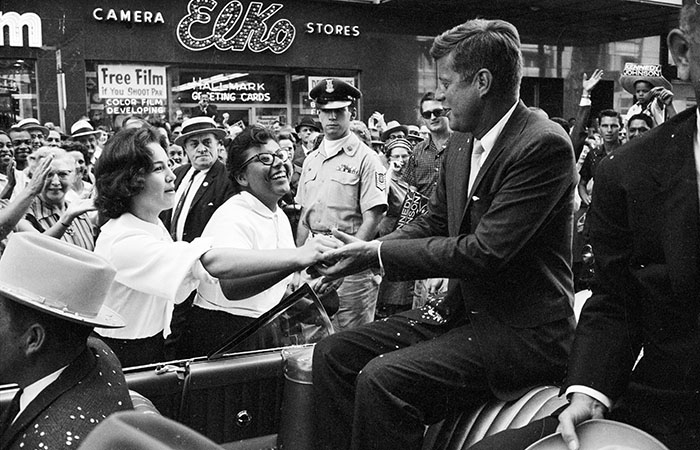
Certain dates are deeply etched in the American conscience, such as Dec. 7, 1941, or Sept. 11, 2001. The assassination of President John F. Kennedy on Nov. 22, 1963, is one of those dates, which Walter Cronkite called “monumental collective national experiences.” On the 60th anniversary of Kennedy’s death, the center’s resources offer inside perspectives on that fateful date.
President Kennedy was shot while riding in an open-air limousine, part of a presidential motorcade passing through Dealey Plaza in Dallas. Joining the president was his wife, Jacqueline Kennedy; Texas Gov. John Connally and his wife, Nellie; and two security personnel. Several vehicles behind the limousine was a media bus carrying reporters and communications personnel. Julian Read, Gov. Connally’s press secretary, was on board the media bus. He heard a “pop-pop-pop” sound and then saw the presidential limousine lurch forward and away from the motorcade.
Through the ensuing panic, Read made his way to Parkland Hospital, where he found the First Lady and Nellie Connally, whose husband was seriously injured, outside the trauma rooms. Mrs. Connally relayed to Read what she had experienced in the limousine, information he used in his press briefings that same day.
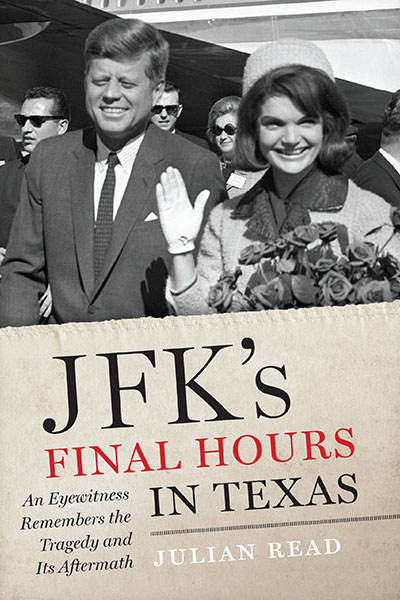
“Volumes have been written about all that happened following the assassination,” said Read in a 2013 interview with center staff. “But little has been recorded about the things that did not happen. Kennedy was due to travel to Austin for a fundraiser and gala. Hundreds of Texans from all over the state were already in their hotels preparing for that evening. The decorations were all in place. The barbeque at the LBJ Ranch was cooking. These stories leave a unique local imprint upon the national heartbreak that followed.”
Read’s archives include invitations to these canceled events, his personal notes from Parkland Hospital, handwritten press requests and even an angry telegram from CBS News. The archive also includes a document created by one of Connally’s staffers, furnishing the president with local references to give his Texas speeches some provincial charm. The references for Austin include praise for UT, an Oklahoma Sooners joke, and another about Coach Darrell K. Royal. The center published Read’s memoir of the assassination in 2013.
Also on the ground in Dallas was reporter Dan Rather, then the chief correspondent for CBS News in New Orleans. He had arrived to help local CBS station KRLD cover the president’s visit. As journalists scrambled in the aftermath of the shooting to get information, Rather received unofficial confirmation of Kennedy’s death from a doctor and a priest at Parkland. CBS Radio/Television reported this before official confirmation. Rather was one of only two journalists, together with Dick Stalley from Time magazine, to see the Zapruder film, which he then described from memory on television.
In 2018, the Briscoe Center collaborated with Rather to create www.danratherjournalist.org, which hosts a broad selection of materials from Rather’s papers that document his extraordinary career—including many related to the Kennedy assassination. Using primary sources housed at the center and other repositories, the Dan Rather website features production notes, video clips, transcripts of shows, press reviews, photographs, and artifacts, as well as oral interviews with Rather’s former collaborators.
Rather’s colleague, legendary CBS News anchor Walter Cronkite, hosted the national coverage that day from New York City. Using information sourced from Rather in Dallas, Cronkite had the unenviable task of informing the nation the president was dead. “It took us ten minutes to get a camera into the studio and warmed up,” Cronkite told Don Carleton, Briscoe Center executive director, in 1990 during interviews for Cronkite’s memoir. “Meanwhile, we were only doing audio with a slide of the CBS logo on the screen.” His papers include logs and transcripts of CBS’s live coverage and feature his original notes: “That is the way it was on one of the most historic days of our lives.”
Cronkite’s producer Les Midgley was at the helm for the four evenings of CBS news programming after the Kennedy assassination, pioneering what became known as “the instant special.” His papers include correspondence, memoranda, articles, scripts, drafts, financial and legal documents, and research files. In the following decades, Rather, Cronkite, and Midgley regularly went back to the tragic events, with reports on Lee Harvey Oswald, the Warren Commission, the assassination itself, and conspiracy theories.
Others on the ground who have also donated important collections to the center include Congressman Jack Brooks, Reporter Seth Kantor, Judge John Singleton, and photojournalist Shel Hershorn. Congressman Brooks traveled in the motorcade behind the presidential limousine and later stood by during the swearing in of President Lyndon B. Johnson on Air Force One at Love Field.
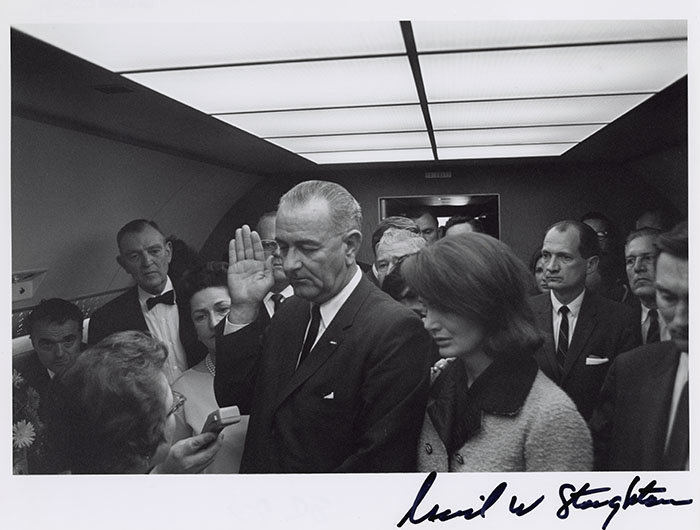
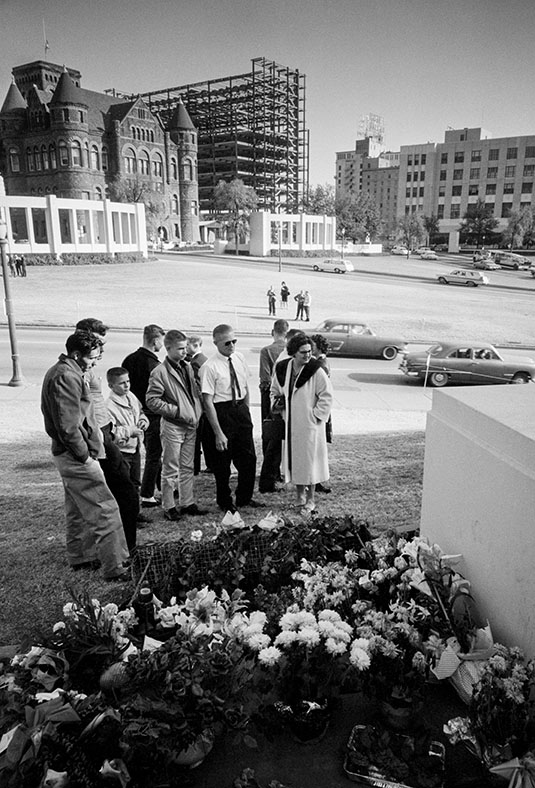
Like Julian Read, Seth Kantor was present in the White House press bus and also rushed to Parkland Hospital. He later testified before the Warren Commission that while at the hospital he spoke with Lee Harvey Oswald’s killer, Jack Ruby, a detail refuted by the Warren Commission. Later, Kantor questioned official accounts of the assassination. His papers include rough drafts and research notes from the book, cassette tape interviews, photographs and correspondence.
Meanwhile, photographer Shel Hershorn captured the mood of Dallas in the immediate aftermath of the assassination, including images of Lee Harvey Oswald in police custody. Additionally, the Dallas Morning News Editorial Records document the public response to the paper’s editorials on Kennedy, as well as conservative advertisements in the paper related to his administration and the assassination.
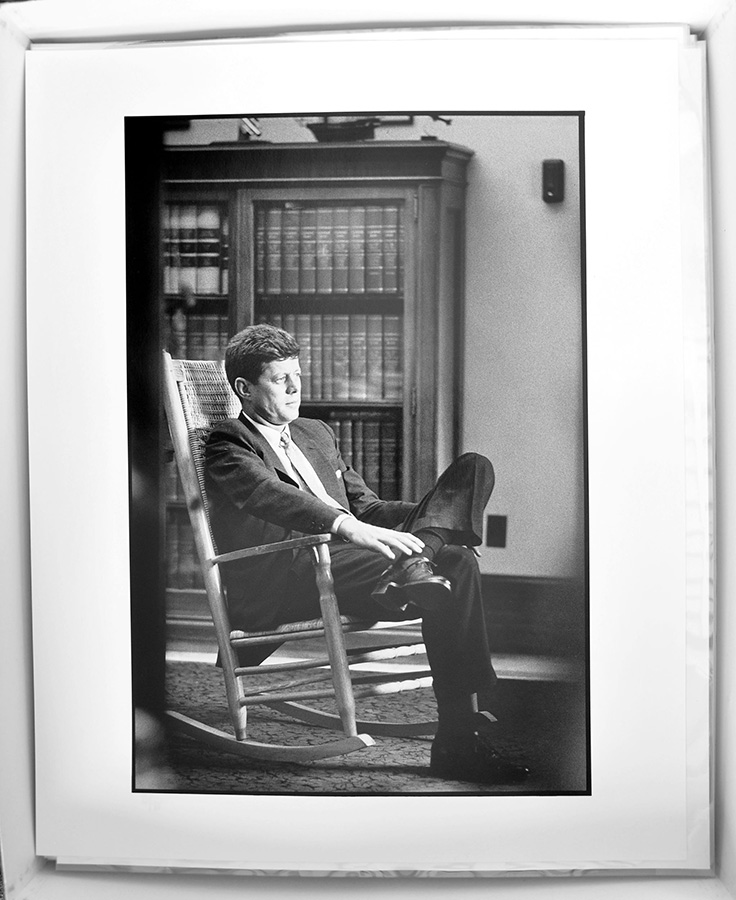
Kennedy’s presidency was impactful in ways that transcended its tragic end. The vibrancy of his professional and personal life was captured in intimate detail by photographer Jacques Lowe. A former Life photographer, Lowe was hired to record JFK’s 1960 bid for the presidency and continued with a brief tenure in the White House. The center’s Jacques Lowe collection includes nearly 6,000 prints, 2,000 contact sheets, 5,000 negatives, and hundreds of documents.
Wally MacNamee, Flip Schulke, Eddie Adams, and Dennis Brack also documented elements of the Kennedy presidency as photojournalists. In addition, the papers of Kennedy’s speechwriter, Richard Goodwin, include memos and notes, as well as drafts of JFK’s inaugural speech.
Finally, the StudioEIS papers will include detailed information on the statue of President Kennedy commissioned by the John F. Kennedy Center for the Performing Arts in Washington, DC. The 81-inch, 660-pound sculpture is located outdoors in the lower gardens of the Kennedy Center’s REACH campus.
“Our personal and political lives have never been more entwined than they are right now than in this area of public sculpting,” said Ivan Schwartz, co-founder of StudioEIS. “Although it tested our skills, there was deep satisfaction in creating this new Kennedy sculpture.”


